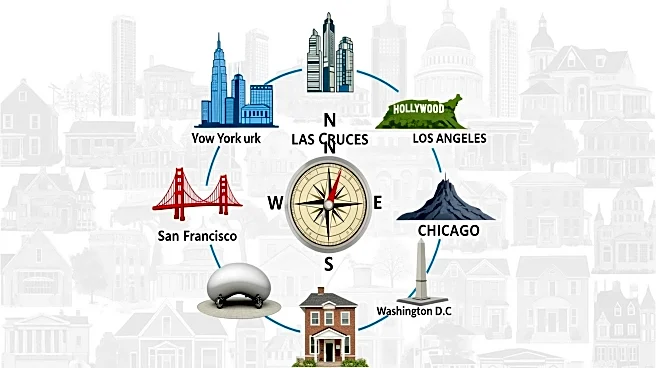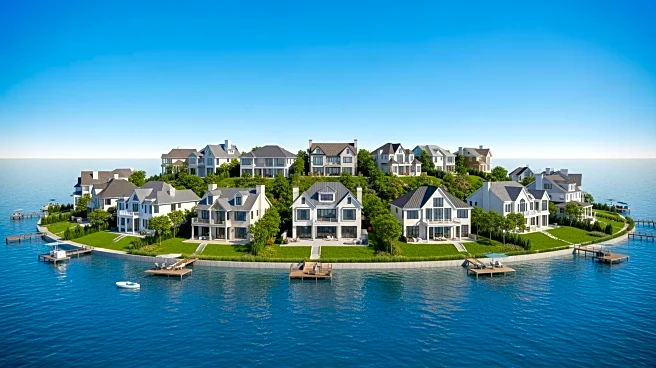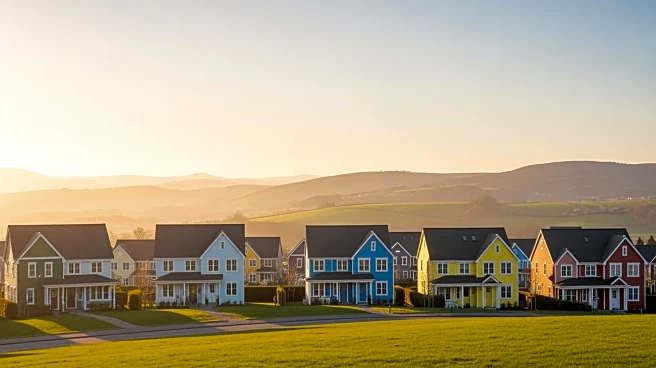What's Happening?
A recent analysis of cross-market demand data from Realtor.com reveals that individuals from various major U.S. metropolitan areas are increasingly looking to purchase homes in Las Cruces, New Mexico.
The scarcity of homes on the market nationwide, which remains below pre-pandemic levels, has kept prices elevated despite a slowdown in sales over the past year. This trend is reflected in the online house hunting behavior, with 97% of homebuyers utilizing online platforms for their search, according to a 2021 National Association of Realtors report. The data highlights that Phoenix, Arizona, leads the list with a 22.2% view share, followed by El Paso, Texas, at 9.4%, and Albuquerque, New Mexico, at 8.5%. Other cities such as Denver, Dallas, and Chicago also show significant interest in Las Cruces.
Why It's Important?
The increased interest in Las Cruces from homebuyers in major metropolitan areas underscores the ongoing challenges in the U.S. housing market, particularly the limited inventory and high prices. This trend could have significant implications for the local real estate market in Las Cruces, potentially driving up demand and prices further. It also reflects broader demographic shifts as individuals seek more affordable living options outside of traditionally expensive urban centers. The movement of homebuyers from cities like Phoenix and El Paso to Las Cruces may influence local economic growth, infrastructure development, and community dynamics, as new residents bring diverse needs and expectations.
What's Next?
As the demand for homes in Las Cruces continues to rise, local real estate agents and policymakers may need to address the potential impacts on housing affordability and availability. Strategies to increase housing supply, such as new construction projects or incentives for sellers, could be considered to meet the growing interest. Additionally, the influx of new residents might prompt discussions on urban planning and resource allocation to accommodate the changing population dynamics. Stakeholders, including local government and community organizations, may engage in dialogues to ensure sustainable growth and integration of newcomers.
Beyond the Headlines
The trend of homebuyers from larger metros moving to Las Cruces could signal a broader cultural shift towards valuing smaller, less congested living environments. This movement might reflect changing priorities among Americans, such as the desire for more space, lower living costs, and a slower pace of life. It also raises questions about the long-term sustainability of urban centers and the potential for increased investment in rural and suburban areas. As remote work becomes more prevalent, the appeal of smaller cities like Las Cruces may continue to grow, influencing future housing market trends and societal norms.











